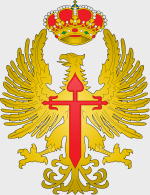Hobby Master HG3610 Spanish M24 Chaffee Light Tank - Unidentified Unit, Saharan Crisis, 1975 (1:72 Scale)
"Neither the internal nor the international acts relied upon by Morocco indicate the existence at the relevant period of either the existence or the international recognition of legal ties of territorial sovereignty between Western Sahara and the Moroccan State. Even taking account of the specific structure of that State, they do not show that Morocco displayed any effective and exclusive State activity in Western Sahara."
- International Court of Justice (ICJ)
 The M24 Chaffee - arguably the best light tank of World War II - was a fast, lightly armored vehicle with the ability to deliver relatively large caliber direct fire thanks to its excellent 75 mm M6 gun. More than 4,000 vehicles were produced by Cadillac and Massey-Harris from 1943-45. The first vehicles reached Europe in late 1944, where they proved very effective and highly reliable. At the outset of the Korean War, however, American forces equipped with the M24 Chaffees performed poorly against the enemy's T-34/85s, and these US units were soon augmented with M26 Pershings and M46 Pattons, along with M4A3E8 Shermans armed with the long 76mm gun. The Chaffee remained in American service until 1953, at which time it was eventually replaced by the M41 Bulldog.
The M24 Chaffee - arguably the best light tank of World War II - was a fast, lightly armored vehicle with the ability to deliver relatively large caliber direct fire thanks to its excellent 75 mm M6 gun. More than 4,000 vehicles were produced by Cadillac and Massey-Harris from 1943-45. The first vehicles reached Europe in late 1944, where they proved very effective and highly reliable. At the outset of the Korean War, however, American forces equipped with the M24 Chaffees performed poorly against the enemy's T-34/85s, and these US units were soon augmented with M26 Pershings and M46 Pattons, along with M4A3E8 Shermans armed with the long 76mm gun. The Chaffee remained in American service until 1953, at which time it was eventually replaced by the M41 Bulldog.
After 1945, the M24 Chaffee was used by many American allies. The French army used them in Indo-China, including at the battle of Dien Bien Phu. Though obsolete by the mid-1960's, it remains in service in some client nations.
This particular 1:72 scale replica of a M24 Chaffee light tank served with the Spanish Army.
Sold Out!
Dimensions:
Length: 4-inches
Width: 1-1/2-inches
Release Date: March 2010
Historical Account: "Last Vestiges of Colonialization" - In the 1960s, Morocco continued to claim Spanish Sahara and succeeded in getting it to be listed on the list of territories to be decolonized. In 1969, Spain returned to Morocco the region of Ifni, that served as the seat of the Spanish administration of Spanish Sahara.
In 1967, the Spanish colonization was further challenged by a peaceful protest movement, the Harakat Tahrir, which demanded the end of occupation. After its violent suppression in the 1970 Zemla Intifada, Sahrawi nationalism reverted to its militant origins, with the 1973 formation of the Polisario Front. The Front's guerrilla army grew rapidly, and Spain had lost effective control over most of the countryside in early 1975. An attempt at sapping the strength of Polisario by creating a modern political rival to it, the Partido de Union Nacional Saharaui (PUNS), met with little success.
Spain proceeded to co-opt tribal leaders by setting up the Djemaa, a political institution (very) loosely based on traditional Sahrawi tribal leaderships. The Djemaa members were hand-picked by the authorities, but given privileges in return for rubber-stamping Madrid's decisions.
Immediately before the death of the aging Spanish dictator, Francisco Franco, Spain was confronted with an intensive campaign of territorial demands from Morocco during the winter of 1975, and to a lesser extent Mauritania, culminating in the Green March. Spain then withdrew its forces and settlers from the territory, after negotiating the Madrid Accords, a tripartite agreement, with Morocco and Mauritania in 1975, by which both took control of the region. Mauritania later surrendered its claim after fighting an unsuccessful war against the Polisario. Morocco engaged in a war with the Algeria-backed Polisario Front, although a cease-fire came into effect in 1991, and the territory remains under dispute.





![US M4A3 Sherman Medium Tank with 3 Figures - Unidentified Unit, Normandy, 1944 [D-Day Commemorative Packaging] (1:16 Scale)](http://cdn4.volusion.store/qh9e9-jdqv9/v/vspfiles/photos/UNI85007-1.jpg?v-cache=1740197136)

![Star Trek Bajoran Transport [With Collector Magazine]](http://cdn4.volusion.store/qh9e9-jdqv9/v/vspfiles/photos/EMST0083-1.jpg?v-cache=1740197136)
